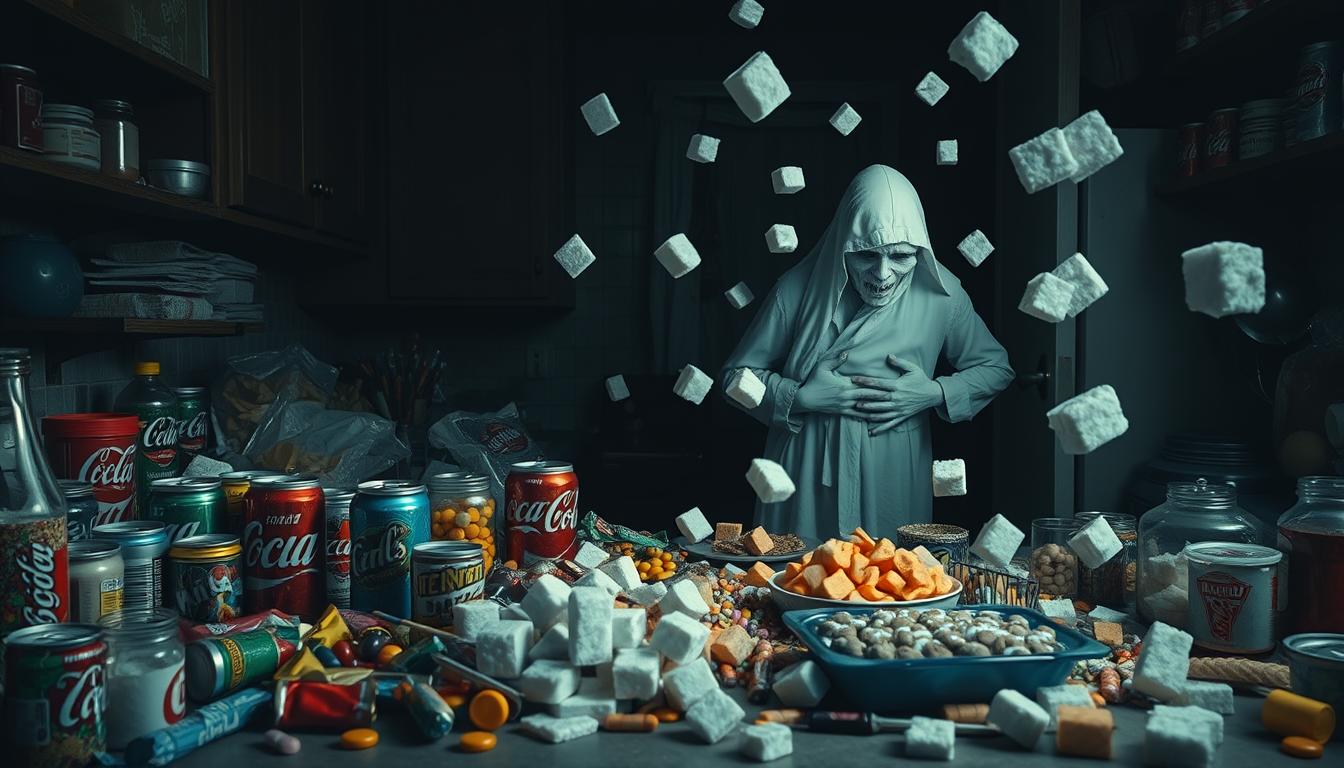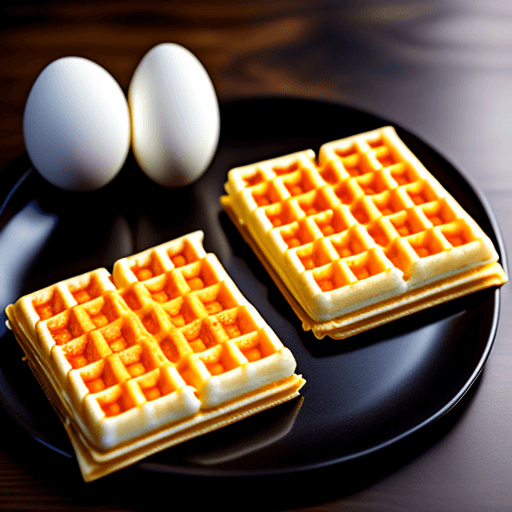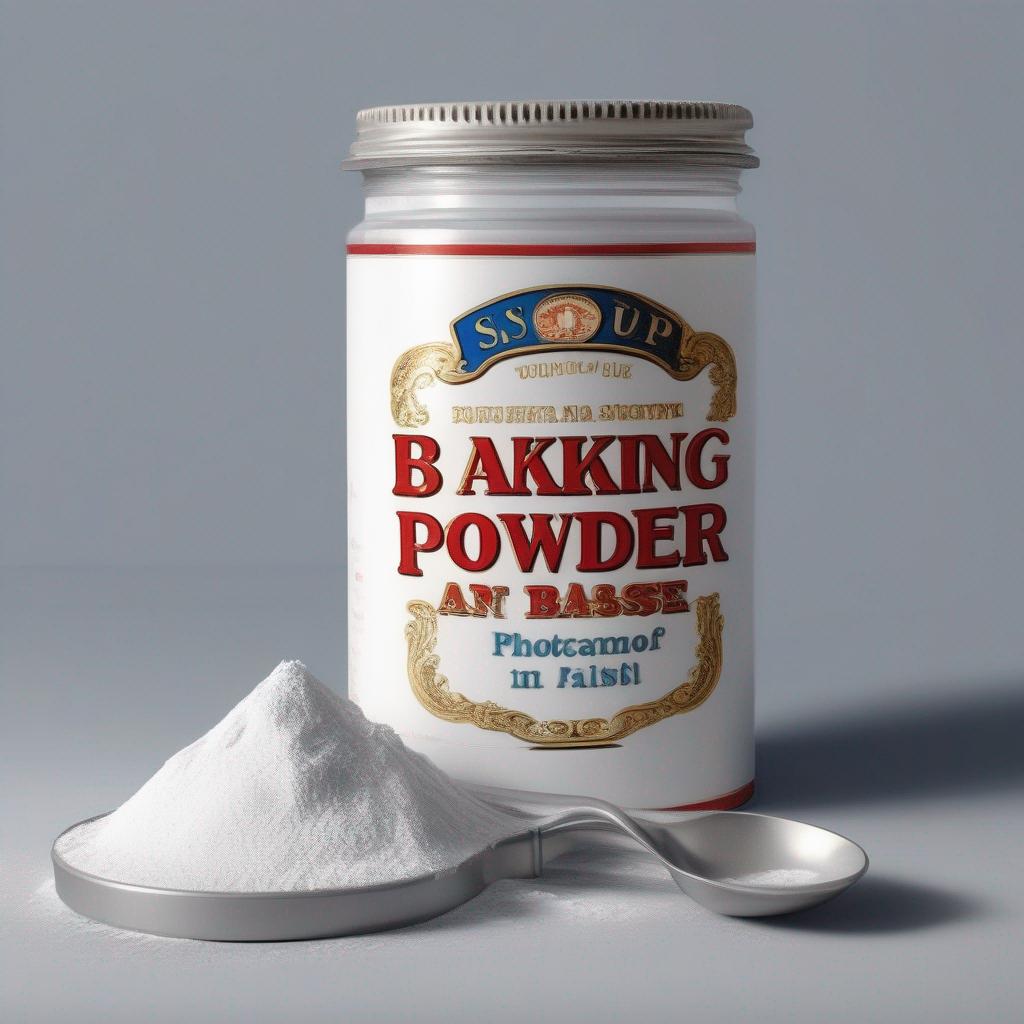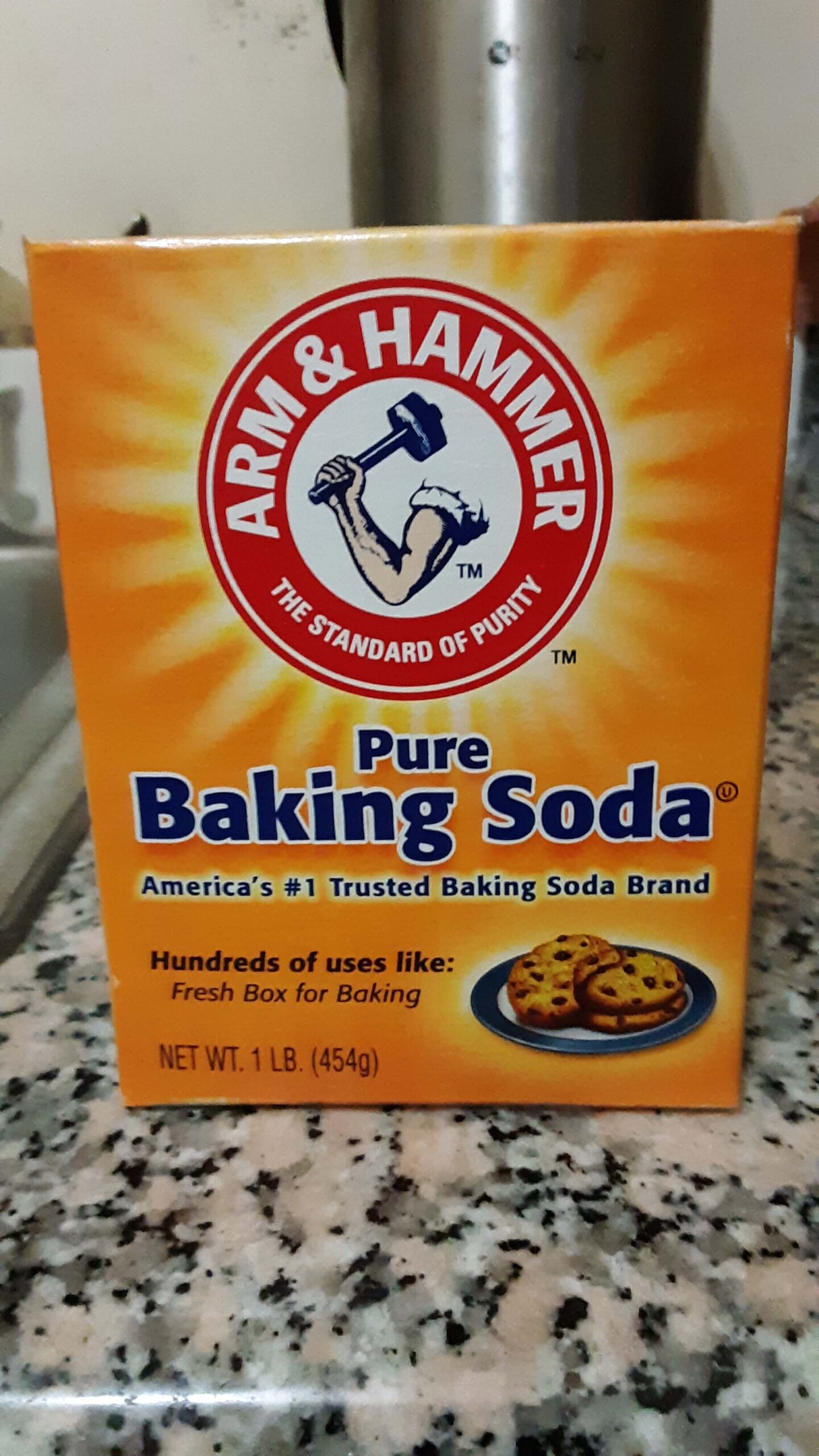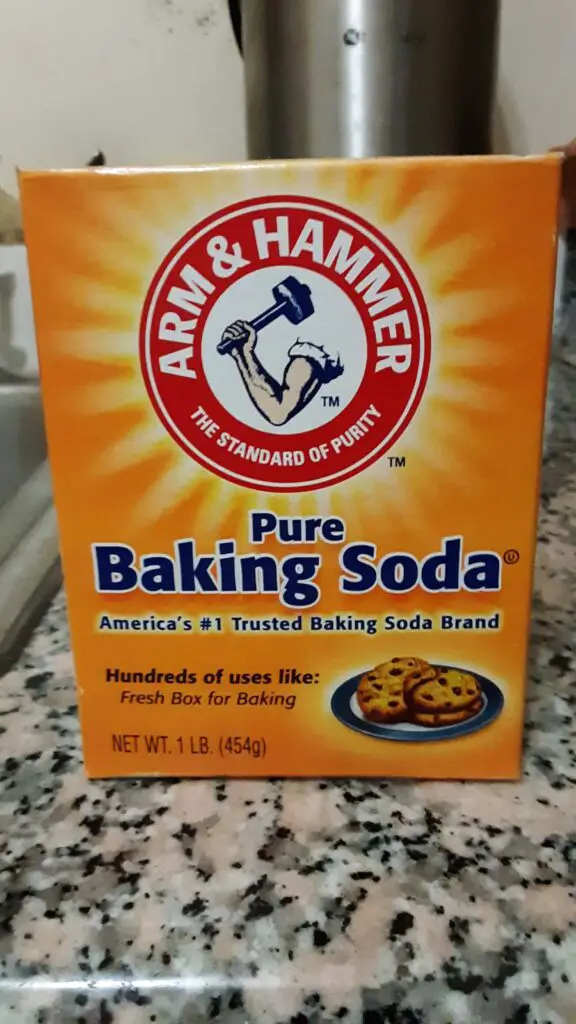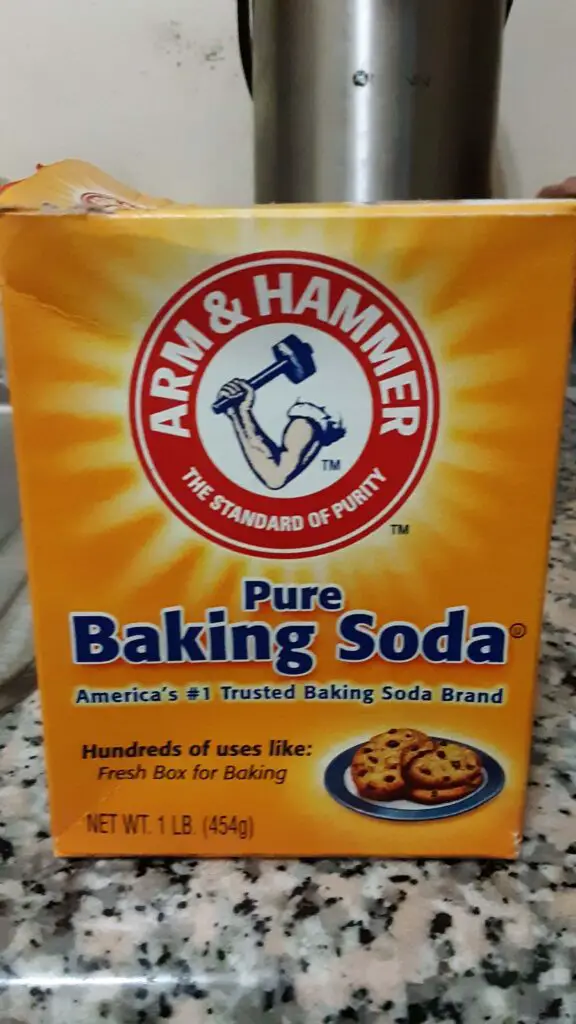One question that has crossed my mind many times is why baking powder is used instead of baking soda to make waffles. After all, both are leavening agents commonly used in baking.
We will investigate the differences between baking soda and baking powder and look at the science behind their roles in creating light and fluffy waffles. We will also discuss the importance of acid in baking, examine the activation process of baking powder, and highlight the benefits of using it over its counterpart.
Key Takeaways
- Baking powder is preferred over baking soda in making waffles because it contains its own acidic ingredients and only requires a liquid to start the reaction, making it more convenient and reliable.
- Insufficient acidity can affect the performance of baking soda in the batter, resulting in dense and heavy waffles that lack airiness and fluffiness.
- Using a combination of baking soda and cream of tartar as a substitute for baking powder could work for recipes without added acid.
- Baking powder creates lighter and fluffier waffles compared to using just baking soda or no leavening agent, and provides a tangy flavor that complements sweet toppings.
Table of Contents
- 1 Leavening Agents in Baking
- 2 The Difference Between Baking Soda and Baking Powder
- 3 The Science Behind Carbon Dioxide Gas
- 4 The Importance of Acid in Baking
- 5 Acidic Ingredients in Waffle Batter
- 6 Insufficient Acidity for Baking Soda
- 7 Effects of Incomplete Activation of Baking Soda
- 8 The Ideal Leavening Agent for Waffles
- 9 The Combination of Baking Soda and Acid
- 10 The Activation of Baking Powder
- 11 The Role of Cream of Tartar in Baking Powder
- 12 Benefits of Using Baking Powder in Waffles
- 13 Substituting Baking Soda for Baking Powder
- 14 Frequently Asked Questions
- 15 Conclusion
Leavening Agents in Baking
You’ll love how baking powder and baking soda work as leavening agents in your baked goods. Leavening agents are ingredients that help baked goods rise and become fluffy.
There are two types of leavening agents: chemical and natural. Chemical leavening agents like baking powder and baking soda, react with acidic ingredients in the batter to create carbon dioxide gas which expands the dough, causing it to rise.
The chemical reactions in baking can be complex, but in simple terms, when an acid ingredient (like yogurt or lemon juice) is combined with a base ingredient (like baking soda), it creates a reaction that releases carbon dioxide gas. This gas gets trapped inside the dough or batter and causes it to expand, creating a light texture in the finished product.
Natural leavening alternatives include yeast for bread making or beaten egg whites for cakes. Gluten-free bakers may also use xanthan gum or guar gum as a substitute for gluten, which helps trap air bubbles during the mixing process.
Over-leavened products can result in a collapsed center or deflated appearance due to too much air being trapped inside the dough or batter during mixing. It’s important to follow recipe instructions carefully when working with leavening agents to ensure optimal results every time!
The Difference Between Baking Soda and Baking Powder
Differentiating between the two leavening agents can enhance your understanding of how to properly prepare various baked goods. Baking soda and baking powder are both rising agents used in baking, but they differ in composition and function. Knowing the difference can help you decide when to use which one for optimal results.
There are four crucial differences between baking soda and baking powder:
-
Composition: Baking soda consists of only one chemical compound called sodium bicarbonate, while baking powder is a mixture of sodium bicarbonate and acidic ingredients like cream of tartar.
-
Chemical reactions: Baking soda requires an acidic ingredient (like lemon juice or vinegar) to activate its leavening power, creating carbon dioxide gas that causes doughs and batters to rise. Baking powder contains its own acidic ingredients, so it only requires a liquid to start the reaction.
-
Strength: Because it requires an additional acidic ingredient, baking soda is more powerful than baking powder per teaspoonful.
- Versatility: While baking soda works well with recipes that already contain acid (like chocolate cake), it might not be suitable for recipes without added acid (like sugar cookies). In those cases, using a combination of baking powder and cream of tartar as a substitute for baking soda could work.
Understanding these differences in composition and function helps you choose the right leavening agent for different types of baked goods. By experimenting with various alternatives to conventional ingredients like baking soda, you can improve your skills in the artful science of cooking and come up with delicious creations that suit your preferences perfectly!
The Science Behind Carbon Dioxide Gas
When baking, it’s fascinating to know that carbon dioxide gas plays a crucial role in making doughs and batters rise. The process of creating this gas is called carbon dioxide reactions, which happens during chemical leavening.
This reaction occurs when an acid (such as cream of tartar) reacts with a base (like baking soda) to produce carbon dioxide gas. As the batter heats up in the waffle iron, the gas expands and creates small pockets throughout the mixture. These pockets are what give waffles their signature fluffy texture.
However, if too much or too little gas is produced, it can result in flat or overly dense waffles. That’s why using the optimal ratios of ingredients is essential for achieving perfect results. The pH levels also play a significant role in controlling how much gas is produced during baking.
If the acidity level is too high or low, it can affect how much CO2 is released into the batter. Baking powder contains both an acid and a base, allowing for a more controlled release of carbon dioxide compared to just using baking soda alone. So next time you’re making waffles, remember that understanding the science behind carbon dioxide reactions and optimal ingredient ratios can make all the difference!
The Importance of Acid in Baking
If you want to achieve the perfect texture in your baked goods, it’s important to understand how adding an acid can affect the final result. Baking chemistry is all about finding the right balance of ingredients that will create a chemical reaction which gives rise and structure to your baked goods.
Acidic reactions play a crucial role in this process as they help activate leavening agents like baking powder, which is why it’s commonly used in waffles.
Acidic ingredients such as buttermilk, vinegar or lemon juice react with baking powder (a combination of baking soda and cream of tartar) to produce carbon dioxide gas. This gas creates air pockets within the batter that expand during cooking, causing the waffles to rise and become fluffy.
The more acidic your batter is, the more carbon dioxide gas will be produced, resulting in lighter and fluffier waffles. Baking powder benefits are not limited to just providing lift; it also helps regulate browning and flavor development.
By using both baking soda and cream of tartar in its composition, baking powder can neutralize any excess acid present in a recipe while imparting its own subtle tangy taste. So next time you make waffles or any other baked good for that matter, pay attention to how much acidic ingredient you add because it might just be one of those leavening secrets that could take your recipe from good to great!
Acidic Ingredients in Waffle Batter
To achieve the perfect texture and rise in your waffles, you’ll want to incorporate acidic ingredients like buttermilk or lemon juice into your batter. Balancing acidity is crucial as too little can result in flat and tough waffles, while too much can make them sour. Buttermilk is a popular choice due to its tangy flavor and ability to tenderize the batter. Lemon juice, on the other hand, adds a subtle citrus note that complements sweet toppings.
Ingredient substitutions are also possible when it comes to acidic ingredients in waffle batter. If you don’t have buttermilk on hand, you can substitute it with regular milk mixed with vinegar or lemon juice. The acid will react with baking powder, creating air bubbles that help the batter rise. However, keep in mind that this substitution may affect the flavor profile of your waffles.
Cooking time is another consideration when using acidic ingredients in waffle batter. The acid can cause the batter to brown faster than usual, so keep an eye on your waffles and adjust cooking time accordingly. Also incorporating acidic ingredients may result in texture differences compared to recipes without them. Waffles made with buttermilk tend to be more tender and moist while those made with lemon juice have a slightly denser crumb structure.
Insufficient Acidity for Baking Soda
You may encounter a problem with your waffles if you don’t use enough acidic ingredients, as the insufficient acidity can affect the performance of baking soda in the batter.
Acidity levels in the batter play an important role in achieving a perfect pH balance. Baking chemistry involves chemical reactions that require just the right amount of alkaline and acidic ingredients.
When baking soda is combined with an acid, it produces carbon dioxide gas, which helps to create fluffy and light waffles. However, if there isn’t enough acid present in the batter, then this reaction won’t occur effectively. The result will be dense and heavy waffles that lack airiness and fluffiness.
To solve this issue, bakers often use baking powder instead of baking soda when making waffles. Baking powder contains both an acid (usually cream of tartar) and an alkaline ingredient (usually baking soda), which means it already has everything necessary to create a successful reaction without relying on additional acidic ingredients.
With proper measurement and technique, using baking powder ensures consistent results every time.
Effects of Incomplete Activation of Baking Soda
Incomplete activation of baking soda can leave your waffles feeling flat as a pancake. Baking soda is a leavening agent that requires an acid to activate it. When there is insufficient acidity in the batter, the baking soda doesn’t fully activate and release carbon dioxide gas, which causes the batter to rise. This leads to dense and heavy waffles with a lack of fluffiness.
The effects of incomplete activation of baking soda can be detrimental to the texture and taste of your waffles. Not only will they be flat and tough, but they may also have a bitter aftertaste due to the excess amount of unreacted baking soda left in the batter.
To avoid this issue, one solution is to increase the amount of acidic ingredients in your batter, such as buttermilk or yogurt. These ingredients will help activate the baking soda and create light and fluffy waffles.
Another solution for incomplete activation is using baking powder instead of baking soda. Baking powder contains both an acid and a base which react together when mixed with liquid, creating carbon dioxide gas without requiring additional acidity from other ingredients in the batter. This makes it easier to achieve consistent results when making waffles or other baked goods that require leavening agents.
By understanding basic principles of baking chemistry like these, you can ensure that your waffles turn out perfectly every time!
The Ideal Leavening Agent for Waffles
Achieving the perfect fluffiness in your waffles relies heavily on finding the ideal leavening agent. Baking powder is commonly used instead of baking soda for making waffles due to its unique composition. It contains both an acid and a base, which react when mixed with moisture and heat to create carbon dioxide gas. This gas creates air pockets in the batter, resulting in a light and airy texture.
When comparing baking powder to baking soda, it’s important to consider not only the texture but also the flavors, shelf life, nutritional value, and cooking time of your waffles. Using baking powder not only provides a fluffy texture but also adds a slightly tangy flavor that complements sweet toppings such as maple syrup or fruit compote. Also baking powder has a longer shelf life than baking soda since it doesn’t lose potency over time.
In terms of nutritional value, both baking soda and baking powder have insignificant amounts of calories and nutrients. However, excessive consumption of either can lead to health problems such as high sodium levels or upset stomachs. As for cooking time, using either leavening agent won’t significantly affect how long it takes to cook your waffles as long as you follow recipe instructions properly. So choosing the right leavening agent depends on personal preference and desired outcomes in terms of texture and flavor.
The Combination of Baking Soda and Acid
Who knew that a simple combination of an acid and base could create such a magical reaction in your waffle batter? The reactive ingredients in baking soda are activated when combined with an acidic medium. This acidity can come from various sources such as buttermilk, yogurt, or even vinegar.
Once the two combine, they undergo a neutralization reaction which creates carbon dioxide gas. This process is what gives your waffles their signature rise. The chemical balance required for this rising process is delicate and requires precision.
Too much baking soda can make your waffles taste bitter while too little will result in flat, dense waffles. Similarly, too much acid can cause the batter to be too thin and difficult to work with while too little will leave you with heavy waffles that lack flavor.
While baking powder also contains baking soda as its main ingredient, it already has an acidic component added to it which eliminates the need for additional acidic ingredients in your recipe. This convenience factor is why most recipes call for baking powder instead of baking soda alone when making waffles.
Next time you whip up a batch of fluffy golden brown waffles, you’ll know exactly why that tiny bit of baking powder made all the difference!
The Activation of Baking Powder
You might be surprised to learn that the secret behind achieving perfectly fluffy and light waffles lies in understanding how baking powder is activated. Baking powder is a leavening agent that contains both an acid (usually cream of tartar) and an alkaline substance (usually baking soda).
When these two compounds are mixed with liquid, they undergo a chemical reaction known as double acting. During the first stage of this reaction, the acid and baking soda begin to react upon contact with liquid. This initial reaction causes carbon dioxide gas to be released immediately, which helps to create air pockets throughout the batter.
The second stage of the reaction occurs when heat is applied during cooking. This activates a slower, but equally important neutralization reaction between the remaining acid in the baking powder and any excess alkaline substances present in the batter.
The effectiveness of baking powder depends heavily on its reaction time. If it reacts too quickly or too slowly, it can result in uneven texture or density within your waffles. Also shelf life can also affect its performance. Over time, exposure to moisture or other chemicals can cause clumping or reduce its ability to activate properly.
By understanding how baking powder works and ensuring proper storage conditions for it, you can achieve consistently delicious results every time you make waffles!
The Role of Cream of Tartar in Baking Powder
If you’re a fan of homemade waffles, then cream of tartar is one ingredient that you’ll definitely want to keep on hand. This powdery substance is commonly used as an acidic component in baking powder, which makes it an essential ingredient in many baked goods, including waffles.
Cream of tartar works by activating the baking soda in the baking powder and creating carbon dioxide gas, which causes the batter to rise and gives waffles their fluffy texture. While cream of tartar is a popular choice for making waffles, there are alternatives available. Some recipes call for using buttermilk or yogurt instead of cream of tartar to add acidity to the batter.
Also some brands of baking powder already contain cream of tartar as an ingredient, so it may not be necessary to add any extra. Cream of tartar isn’t just limited to being used in baking powder for waffle-making; it has other uses too. It can be added to whipped egg whites to stabilize them and prevent them from collapsing, or used as a mild cleaning agent around the house.
However, if you’re looking for ways to use up leftover cream of tartar after making waffles or other baked goods, consider adding it to non-baked recipes like smoothies or marinades for a tangy flavor boost.
Benefits of Using Baking Powder in Waffles
When making waffles, adding baking powder is essential to ensure that they rise and have a fluffy texture. Baking powder is a leavening agent composed of baking soda, cream of tartar, and sometimes cornstarch. It’s often used instead of baking soda because it provides more consistent results in baked goods.
One benefit of using baking powder in waffles is texture improvement. Baking powder creates carbon dioxide gas when combined with moisture and heat, causing the batter to rise and expand. This process leads to lighter and fluffier waffles compared to using just baking soda or no leavening agent at all.
Another advantage of using baking powder in waffles is recipe versatility. Unlike some other ingredients, such as yeast, which require time for fermentation, baking powder works quickly to produce the desired result. This means you can make waffles on short notice without having to wait for dough or batter to rise.
Also incorporating baking powder into your waffle recipe can help control consistency and save time. Measuring out precise amounts of ingredients can be tedious and time-consuming, but pre-made commercial baking powders provide a consistent ratio of ingredients every time you use them. Also by using self-rising flour that already contains leavening agents like baking powder, you can further simplify the recipe preparation process while ensuring consistent quality every time you make waffles.
So adding baking powder to your waffle recipe improves texture and taste while providing ease-of-use benefits that save both time and effort in the kitchen.
Substituting Baking Soda for Baking Powder
Feeling adventurous in the kitchen? Try substituting your usual leavening agent in waffle recipes with something unexpected.
Baking powder is commonly used, but what would happen if we swapped it out for baking soda? Before diving into recipe modification, let’s first understand why baking powder is the preferred choice.
Baking soda and baking powder are both leavening agents used to create a fluffy texture in baked goods. However, baking soda requires an acidic ingredient to activate its leavening properties. In waffles, this usually comes from ingredients like buttermilk or yogurt.
Baking powder, on the other hand, contains both an acid and a base that react when mixed with liquid to produce carbon dioxide gas bubbles. This chemical reaction occurs immediately upon mixing the batter and creates air pockets within the dough that result in light and fluffy waffles.
So what happens if we substitute baking soda for baking powder? To start with, we need to adjust our recipe since there won’t be enough acidity to activate the leavening agent properly. One option is to add cream of tartar or lemon juice as an acid source. However, even with these additions, our taste comparison shows that using just baking soda results in a denser and slightly bitter waffle due to its higher alkaline pH balance compared to baking powder.
While it can be tempting to experiment with different ingredients in recipes like waffles, sometimes sticking with tried-and-true methods is best for optimal taste and texture. Baking powder’s balanced combination of acid and base allows for immediate chemical reactions that create light and airy waffles without overpowering flavors or bitterness.
So next time you’re making breakfast treats at home, consider reaching for the trusty box of baking powder instead of trying out substitutes like baking soda alone!
Frequently Asked Questions
Can baking soda be used instead of baking powder in waffle batter?
Baking soda waffles are a tempting alternative to the classic recipe, but it’s crucial to understand that baking powder and baking soda serve different purposes in the batter.
Baking powder substitutes can be used, but they should be chosen wisely as each one has its own unique properties.
When experimenting with waffle recipe variations using baking soda, it’s important to keep in mind that this leavening agent reacts differently than baking powder and may require other adjustments.
While there are leavening agent alternatives available, they may not yield the same results as baking powder due to their chemical makeup.
To sum up, while it is possible to use baking soda instead of baking powder in waffle batter, it requires careful consideration and understanding of how each ingredient works within the recipe.
Is baking powder healthier than baking soda?
In terms of health benefits, baking powder and baking soda are both low in calories and don’t contain significant nutrients.
However, there are some differences between the two when it comes to usage and risks. Baking soda is a powerful leavening agent that can cause baked goods to rise quickly, but it also has a strong flavor that can be overpowering if too much is used. Consuming large amounts of baking soda can lead to digestive issues such as diarrhea or stomach cramps.
On the other hand, baking powder contains both an acid and a base which allows for more controlled rising during cooking. While it may have a slightly bitter taste compared to baking soda, it is less likely to cause digestive issues.
As for alternatives, cream of tartar mixed with baking soda can be used as a substitute for baking powder in certain recipes.
So while neither option is necessarily “healthier”than the other, understanding their comparison and proper usage can help you make informed decisions in your cooking and baking endeavors.
What is the shelf life of baking powder?
The euphemism for the shelf life of baking powder is its ‘expiration date.’ Baking powder typically has a shelf life of six months to one year, but this can vary depending on how it’s stored.
It should be kept in an airtight container in a cool, dry place away from moisture and heat. While baking powder is commonly used as a leavening agent in waffles and other baked goods, there are alternatives such as using yeast or baking soda with an acidic ingredient.
Baking powder can also be used in other recipes such as pancakes, cakes, and biscuits. When comparing baking powder to yeast, baking powder produces a faster rise and doesn’t require time for proofing like yeast does.
For those who prefer homemade options, there are various homemade baking powder recipes available that use common kitchen ingredients such as cream of tartar and baking soda.
How does altitude affect the use of baking powder in waffles?
When cooking at high altitudes, adjustments must be made to the recipe to ensure that the end result is not negatively affected. This includes adjusting the amount of baking powder used in waffles or any other baked goods.
At higher altitudes, there is less atmospheric pressure which can lead to chemical reactions happening faster than they would at sea level. This means that rising agents like baking powder can cause the batter to rise too quickly and then collapse before it sets properly.
To counteract this, recipe modifications need to be made by reducing the amount of baking powder used or increasing other ingredients such as flour, sugar, or eggs. Also changes in cooking techniques may also be necessary to achieve optimal results when making waffles at high altitude.
Can you make waffles without any leavening agents?
Imagine a canvas, blank and waiting to be filled with color and texture. Without paint, the canvas remains plain and unremarkable. The same can be said for waffles without leavening agents. They lack the airiness and fluffiness that make them so irresistible.
However, there are ways to add depth and interest to your waffles even without leavening agents. Experiment with flavorful toppings like fresh fruit or whipped cream, or get creative with mix-ins such as chocolate chips or nuts. Alternative flours like almond flour or coconut flour can also add a unique twist to classic waffles.
But before you start experimenting, don’t forget about proper waffle iron maintenance! A clean and well-maintained iron is important to perfectly cooked waffles every time. And speaking of perfect cooking time, it may take some trial and error to find the right balance without leavening agents, but don’t give up – the result will be worth it in the end.
Conclusion
Also using baking powder instead of baking soda in waffles is essential for creating fluffy and airy treats. The science behind leavening agents, specifically the release of carbon dioxide gas, is crucial in achieving this texture. Also acidic ingredients such as buttermilk or yogurt play a vital role in activating baking powder.
When cream of tartar is added to baking powder, it enhances its ability to create bubbles and ultimately results in a lighter product. Using baking soda alone may result in a flat and dense waffle due to the lack of acid needed to activate it properly.
So understanding the differences between these leavening agents and their chemical reactions can lead to better and more delicious baked goods. So next time you’re craving some mouth-watering waffles, remember that using baking powder will give you the perfect rise every time.
